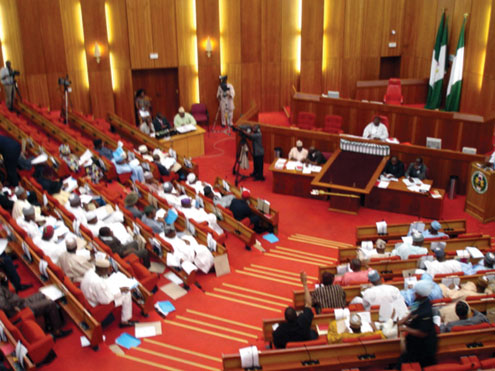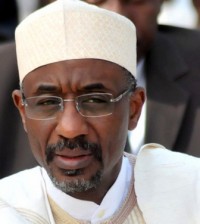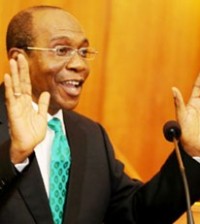MPC BOOSTS REAL SECTOR: Stresses Need To Unlock the Credit Market
In tandem with the desire of the Central Bank of Nigeria at ensuring that the financial sector contributes to the real economy as enunciated under the four pillars of the banking reforms, the Monetary Policy Committee (MPC) has taken far reaching decisions aimed at channeling credit to the real sector.
This was revealed by the Governor, Central Bank of Nigeria, Mallam Sanusi Lamido Sanusi, at the press briefing on the outcome of the 213th meeting of the MPC held on March 1-2, 2010. The Committee while reviewing key domestic macroeconomic and financial developments in the country noted the constraints militating against the granting of credit by the Deposit Money Banks (DMBs) among which was the 66% loss of their capital between December 2008 and
December 2009 and therefore underscores the need for an Asset Management Corporation to
deal with non-performing loans and fast-track recapitalization of these institutions to enable them
continue to grow their loan books.
The Committee also underlined the need for the sustenance of the easing of monetary policy in
view of the slack in aggregate demand occasioned by the trends in money supply, reflecting a
fall in all its components, including net foreign assets, credit to private sector and credit to the
government.
It was also observed that any attempt at this time to tighten monetary policy will exacerbate the
problem and further constrain credit availability to the real economy. While noting the potential
for inflationary pressure, in the near –to- medium term, the MPC observed that recent
experience shows that inflation has been driven largely by structural factors particularly the
bottleneck experienced in the supply of petroleum products in the wake of the announcement of
the full deregulation of the downstream sector of the petroleum industry.
The Committee therefore stressed the need to unlock the credit market, although, it was
observed that there is sufficient liquidity in the money market as suggested by the low interbank
interest rates, but that the perception of credit risk on the part of the DMBs remained a major
constraint to their ability to lend to the real sector of the economy. In this regard, the Committee
felt that a broader macroeconomic policy framework will be needed to unlock the credit market.
In this context, the MPC recognized the need to encourage the DMBs to channel the excess
funds deposited with the CBN under the Standing Deposit Facility (SDF) to the real sector. It
therefore considered the review of the setting of the Standing Facility corridor as imperative, to
encourage banks to lend to the productive sectors of the economy.
As part of the efforts to bring lending rates down, provide alternative sources of long-term funds
to finance development projects and deepen the capital market in line with the CBN’s
development mandate, the MPC further deliberated on the possibility of granting liquidity status
to bonds issued by state governments that meet certain eligibility criteria, including the
Investment and Security Act 2007 (ISA) and Debt Management Office (DMO) requirements.
In the light of the above, the Committee unanimously took the following decisions:
1. The Monetary Policy Rate (MPR) remains unchanged at 6.oo per cent;
2. Standing Lending Facility (SLF) interest rate remains unchanged at 8 per cent, while the
Standing Deposit Facility (SDF) was reduced from 2 per cent to 1 per cent;
3. Granted liquidity status to bond issued by State Governments subject to their eligibility
criteria in order to make them eligible instrument of transaction in the secondary market.
Detail guidelines on this will be issued in due course, principally related to meeting strict
standards of fiscal responsibility; and
4. To continue with the quantitative easing policy by providing N500 billion facility for
investment in debentures issued by the Bank of Industry (BOI) in accordance with Section
31 of the CBN Act 2007, for investment in emergency power projects dedicated to
industrial clusters. The funds are to be channeled through the Bank of Industry for onlending
to the DMBs at a maximum interest rate of 1.0 per cent for disbursement of loans
with a tenor of 10 – 15 years at concessionary interest rate of not more than 7.0 per cent.
The Committee also approved in principle the extension of this facility to DMBs for the
purpose of refinancing/ restructuring existing portfolios to manufacturers. However, the
final approval for this will come after the consideration of the report of a technical
committee to be set up to work out the modalities, for implementation within one month.
Membership of the committee comprises the CBN, the Bankers’ Committee Sub-committee
on Economic Development, Bank of Industry, Manufacturers Association of Nigeria
(MAN), and National Association of Small and Medium Enterprises (NASME). The
African Finance Corporation (AFC) will serve as technical adviser on the power project. In
the case of the power projects, the following projects of the Federal Government will be
covered under this facility subject to their being restructured into commercially viable
projects on which banks are willing to take credit risks: Lagos (500 MW); Kano (250 MW);
Onitsha/Nnewi (200 MW); Port Harcourt/Aba (200MW); Kaduna (225 MW);
Funtua/Gusua/MFashi/Zaria (200 MW); Lokoja (200MW); and Maiduguri/Gombe/Bauchi
(200 MW).
Other power projects currently being financed by banks may also be refinanced from the
fund. However, banks will be required to secure the funds drawn with eligible securities. In
addition, real sector projects certified bankable that emanate from the State Governors’
engagement with the Bankers’ Committee in line with the outcome of the Enugu Retreat
will be accommodated under the facility.
M. M. Abdullahi
Head, Corporate Communications
March 2, 2010








